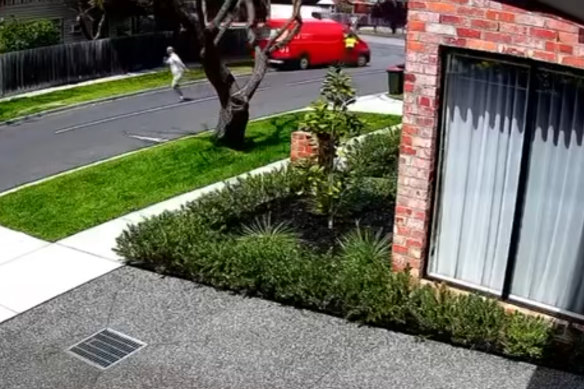By Cara Waters
People across Victoria are about to cop a $99 fine for failing to vote in the local council elections unless there is a last-minute scramble to the state’s post boxes.
Votes for council elections must be in the mail by 6pm on Friday, but so far, only 61 per cent of voters have voted, according to the Victorian Electoral Commission’s latest figures.

A man walks past posters for candidates in the City of Yarra. Credit: Justin McManus
It’s easy to blame apathy about yet another election, this time for our third tier of government, but conducting the election entirely by post must also be a factor.
With no sausage sizzles, bake sales, corflutes outside the local primary school or voting day to mark in the diary, there is no sense of occasion around this election, no pressing impetus to vote.
Instead, we just had to wait for our ballot paper to land in our letterboxes, sandwiched between the junk mail and the handful of bills not delivered online.
The path to the post box is no longer a well-trodden one, with letter volumes through Australia Post falling by 11.9 per cent last year.
For younger voters, who might move frequently between different rental accommodation, keeping a current postal address updated can be difficult, and postal delivery in large blocks of apartments can be tricky.
Postal voting can also raise concerns about trust in the electoral process when voters are not directly placing their forms in the ballot box.
Ballots have to pass a long way from their dispatch at the post box to delivery to the ballot box, and voters must have absolute trust that their envelopes will complete the journey successfully.
The theft of an Australia Post van in Oakleigh last week and of a post box in Brighton this week does not exactly inspire confidence in the security of posted ballot papers.

A thief steals an Australia Post van with council ballot papers on board, as the driver tries to stop him.Credit: 3AW Drive host Jacqui Felgate.
Postal voting has long been an option for Victorian council elections, but the first time voting was conducted entirely by post was in the 2020 elections during lockdown.
Electoral turnout that year was 81.47 per cent, but this was a time when we were not allowed to leave our homes without a reason and a trip to post a letter became a highlight of the week.
It’s a long time since then. State and federal elections have returned to in-person voting, but council elections are being conducted solely by post.
Even our neighbours in NSW, who held their council elections last month, returned to in-person voting, alongside the option for a postal vote.
The state government’s move to switch to solely postal voting, install single member wards and to ignore the City of Melbourne’s calls for reform of its electoral system is enough to make you suspect it does not care about democracy at a council level.
The postal vote has also changed the nature of the election campaigns which traditionally build towards a crescendo on election day, to ensure voters minds are focused and full of information at the point when they are voting.
In this election Melbourne’s lord mayoral candidates made sure to announce their big ticket items early and planned on not making significant announcements in the final week.
However, with voter turnout in the City of Melbourne sitting at a lowly 49.8 per cent, they have been scrambling to find new things to grab voters’ attention with. Lord Mayor Nick Reece extended an earlier pledge to light up Melbourne’s laneways to the city’s bridges and rival Arron Wood promised a Hollywood style walk of fame.
Advocates of postal voting point out that it is cheaper and more convenient for voters with, conditioned by the “Netflix effect”, under which we expect to be able to consume and do things when, where and how we want.
But what if what we really want is to cast our ballot at our local primary school, after having a chat to the candidates or their teams outside, with a sausage in hand?
For those who would prefer to vote by post, that option is always available, but it shouldn’t be the only way to vote.
Start the day with a summary of the day’s most important and interesting stories, analysis and insights. Sign up for our Morning Edition newsletter.